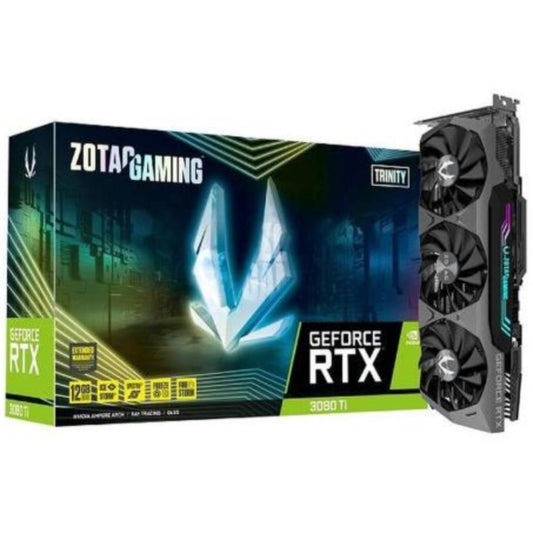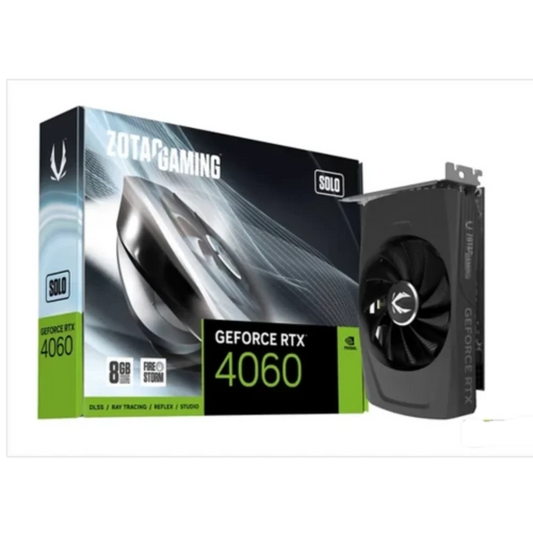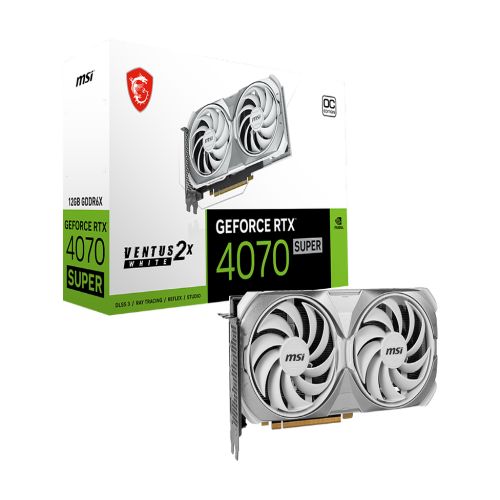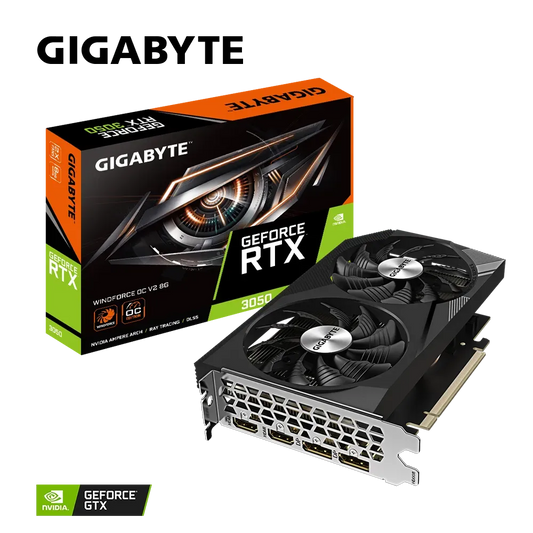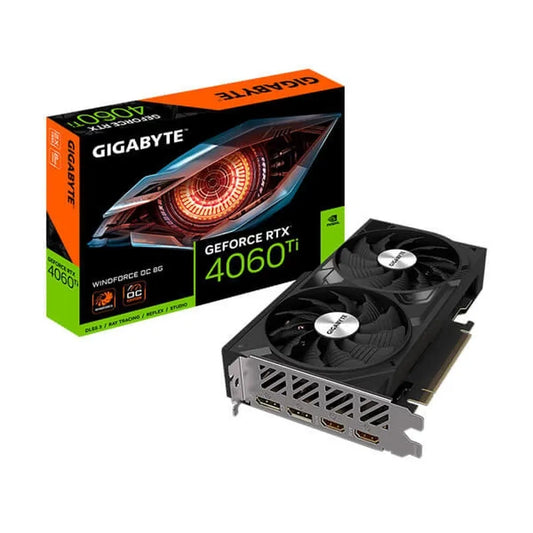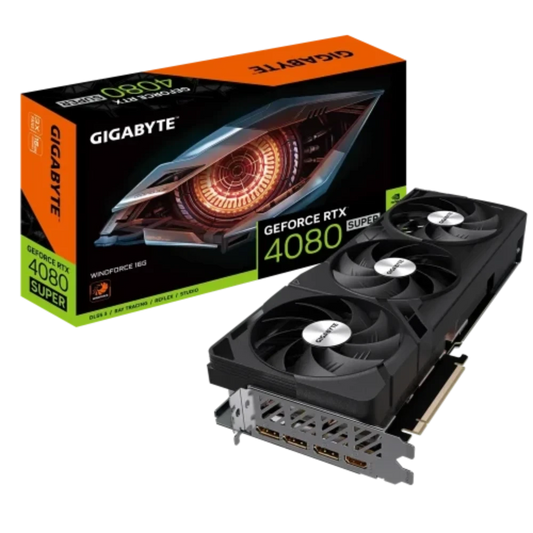ZOTAC Gaming GeForce RTX 3080 Ti Trinity 12GB Nvidia Graphic Card
Rs. 104,500.00
Rs. 162,999.00
COLORFUL GeForce RTX 4070 Ti NB EX-V Battle AX Gaming 12GB Nvidia Graphic Card
Rs. 65,000.00
Rs. 84,500.00
ZOTAC Gaming GeForce RTX 4060 Solo OC 8GB Nvidia Graphic Card
Rs. 23,000.00
Rs. 39,999.00
GIGABYTE GeForce RTX 4060 Ti Gaming OC 8GB Nvidia Graphic Card
Rs. 41,755.00
Rs. 59,999.00
ASUS Dual Radeon RX 7600 OC Edition 8GB AMD Graphic Card
Rs. 25,599.00
Rs. 47,999.00
MSI GeForce RTX 4070 Ti Super Ventus 3X OC 16GB Nvidia Graphic Card
Rs. 73,000.00
Rs. 116,699.00
MSI GeForce RTX 4070 Super Ventus 2X OC White 12GB Nvidia Graphic Card
Rs. 61,595.00
Rs. 85,699.00
COLORFUL Geforce RTX 4070 Ti Super NB EX-16GB Nvidia Graphic Card
Rs. 73,000.00
Rs. 124,879.00
MSI GeForce RTX 4070 Super Ventus 2X OC 12GB Nvidia Graphic Card
Rs. 57,595.00
Rs. 86,599.00
GIGABYTE GeForce RTX 4060 Ti Aero OC 8GB Nvidia Graphic Card
Rs. 46,599.00
Rs. 59,999.00
ZOTAC Gaming GeForce RTX 4060 Ti Twin Edge OC White Edition 8GB Nvidia Graphic Card
Rs. 40,899.00
Rs. 52,500.00
SAPPHIRE Radeon RX 7700 XT Nitro+ Gaming OC 12GB AMD Graphic Card
Rs. 45,870.00
Rs. 66,999.00
GIGABYTE GeForce RTX 4060 Ti Eagle OC 8GB Nvidia Graphic Card
Rs. 41,095.00
Rs. 59,999.00
COLORFUL GeForce RTX 4060 Ti NB Duo V Battle AX 8GB Nvidia Graphic Card
Rs. 34,999.00
Rs. 46,699.00
GIGABYTE GeForce RTX 4060 Ti Eagle 8GB Nvidia Graphic Card
Rs. 39,999.00
Rs. 59,999.00
GIGABYTE GeForce RTX 3050 WindForce OC V2 8GB Nvidia Graphic Card
Rs. 24,499.00
Rs. 26,246.00
COLORFUL GeForce RTX 4060 NB Duo 8GB Nvidia Graphic Card
Rs. 28,444.00
Rs. 36,699.00
COLORFUL GeForce RTX 4070 Super Battle AX NB EX 12GB-V Nvidia Graphic Card
Rs. 55,866.00
Rs. 86,699.00
COLORFUL GeForce RTX 4070 NB EX-V Nvidia Graphic Card
Rs. 51,000.00
Rs. 79,999.00
GALAX GeForce RTX 4060 ( 1-Click OC ) 2X 8GB NVIDIA Graphics Card
Rs. 30,790.00
Rs. 55,000.00
MSI GeForce RTX 4060 Ventus 2X OC 8GB Nvidia Graphic Card
Rs. 28,999.00
Rs. 51,999.00
MSI GeForce RTX 4070 Ventus 2X E 12GB OC Nvidia Graphic Card
Rs. 53,145.00
Rs. 78,699.00
GIGABYTE GeForce RTX 4060 Ti Windforce OC 8GB NVIDIA Graphics Card
Rs. 41,495.00
Rs. 43,577.00
COLORFUL GeForce RTX 4060 Ti iGame Ultra W Duo OC-V 16GB Nvidia Graphic Card
Rs. 43,495.00
Rs. 66,399.00
ASROCK Radeon RX 7600 XT Steel Legend OC 16GB AMD Graphic Card
Rs. 29,000.00
Rs. 46,624.00
INNO3D GeForce RTX 3060 Twin X2 LHR 12GB Nvidia Graphics Card
Rs. 23,900.00
Rs. 29,999.00
GIGABYTE GeForce RTX 4080 Super Windforce OC 16GB Nvidia Graphic Card
Rs. 111,999.00
Rs. 136,999.00
ZOTAC Gaming GeForce RTX 4070 Twin Edge OC 12GB Nvidia Graphic Card
Rs. 52,999.00
Rs. 99,999.00
MSI GeForce RTX 4060 Ventus 2X OC White 8GB Nvidia Graphic Card
Rs. 31,495.00
Rs. 56,998.00
ASUS Dual GeForce RTX 4070 White OC Edition 12GB Nvidia Graphic Card
Rs. 64,494.00
Rs. 72,999.00
ZOTAC Gaming GeForce RTX 4070 AMP Airo Spider-Man Across The Spider-Verse Bundle Nvidia Graphic Card
Rs. 61,299.00
Rs. 89,999.00
ZOTAC Gaming GeForce RTX 4070 Twin Edge 12GB Nvidia Graphic Card
Rs. 55,185.00
Rs. 66,999.00
ZOTAC Gaming GeForce RTX 4060 Twin Edge OC 8GB White Edition Nvidia Graphic Card
Rs. 30,810.00
Rs. 41,999.00
ASUS Dual GeForce RTX 4070 OC Edition 12GB Nvidia Graphic Card
Rs. 49,000.00
Rs. 69,999.00
COLORFUL GeForce RTX 4060 Ti iGame W OC-V 8GB Nvidia Graphic Card
Rs. 42,295.00
Rs. 59,999.00
MSI GeForce RTX 4090 Gaming X Trio 24GB Nvidia Graphic Card
Rs. 223,895.00
Rs. 250,000.00
INNO3D GeForce RTX 3050 Twin X2 OC 8GB Nvidia Graphic Card
Rs. 16,000.00
Rs. 25,999.00
MSI GeForce RTX 4070 Ti Super Ventus 2X OC White 16GB Nvidia Graphic Card
Rs. 79,999.00
Rs. 156,999.00
GIGABYTE GeForce RTX 4060 Ti Aorus Elite Non OC 8GB Nvidia Graphic Card
Rs. 45,775.00
Rs. 56,999.00
MSI GeForce RTX 4080 Super 16GB Expert GDDR6X Nvidia Graphic Card
Rs. 121,245.00
Rs. 208,546.00
COLORFUL GeForce RTX 4060 Ti NB EX-V Battle AX Gaming 8GB Nvidia Graphic Card
Rs. 39,694.00
Rs. 59,655.00
INNO3D GeForce RTX 4070 Twin X2 12GB Nvidia Graphic Card
Rs. 52,595.00
Rs. 98,999.00
MSI GeForce RTX 3050 Ventus 2X XS OC 8GB Nvidia Graphic Card
Rs. 23,495.00
Rs. 28,999.00
INNO3D GeForce RTX 4060 Twin X2 OC Nvidia Graphic Card
Rs. 28,345.00
Rs. 40,999.00
ASROCK Radeon RX 7900 GRE Challenger OC 16GB AMD Graphic Card
Rs. 53,349.00
Rs. 94,869.00
ASUS ProArt GeForce RTX 4060 OC Edition 8GB Nvidia Graphic Card
Rs. 30,925.00
Rs. 78,479.00
ASUS Dual GeForce RTX 4070 Super White OC 12GB Gaming Nvidia Graphic Card
Rs. 65,795.00
Rs. 105,638.00
ASUS Dual GeForce RTX 4060 Ti Dual OC Edition 8GB Nvidia Graphic Card
Rs. 43,395.00
Rs. 99,549.00
ASUS Dual GeForce RTX 4060 Evo OC Edition 8GB Nvidia Graphic Card
Rs. 29,395.00
Rs. 43,659.00
ZOTAC Gaming GeForce RTX 4070 Ti Super Trinity OC White Edition 16GB Nvidia Graphic Card
Rs. 75,599.00
Rs. 99,999.00

